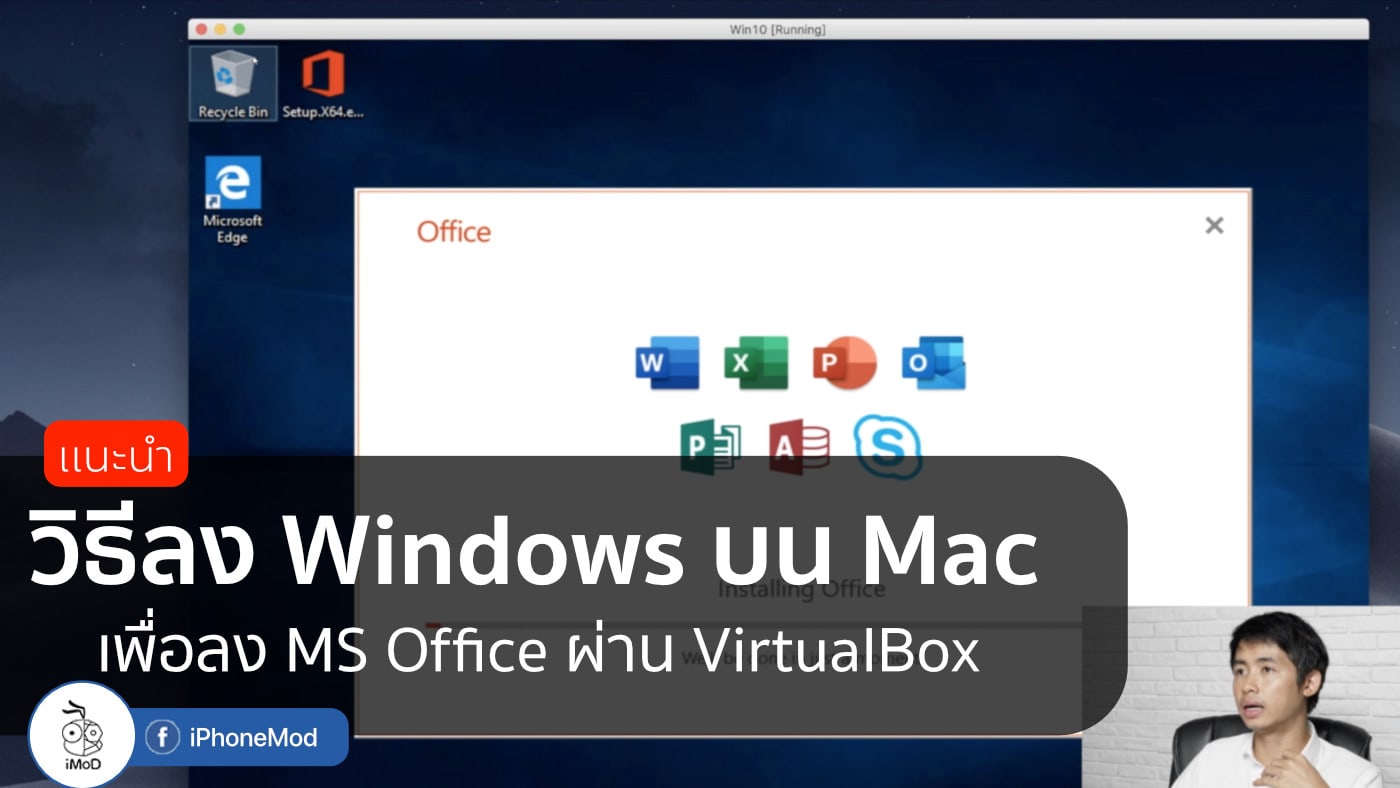
- #Windows 10 virtualbox image for mac how to#
- #Windows 10 virtualbox image for mac for mac#
- #Windows 10 virtualbox image for mac mac os x#
- #Windows 10 virtualbox image for mac mac os#
- #Windows 10 virtualbox image for mac software#
#Windows 10 virtualbox image for mac mac os#
If you did not enable sharing at all in your Windows computer, you won’t be able to connect your Virtualbox Mac OS to your Windows.Next you'll be prompted to select how much RAM you want to devote to your Windows 10 virtual machine. This is the folder that you have set to share in your Windows computer. You may get a prompt asking you which account, password etc. Go to the “Settings” option of the Mac OS X, under “Sharing”, put a tick on enable file sharing.Ĭlick on the Finder, or Desktop and click on the “Go” option in the menu followed by “Connect to Server”.
#Windows 10 virtualbox image for mac mac os x#
Using the Mac OS X in Virtualbox, you must connect to your Windows Desktop by means of networking. Identify the IP that belongs to your computer. Type “ipconfig” without the quotes and hit enter.
#Windows 10 virtualbox image for mac for mac#
The only difference will be that when you need to eject the installation disc so that you can insert the iboot disc, simply mount and unmount the iso via the Virtualbox software.ĭue to the fact that “Shared folders” in Virtualbox do not work for Mac at all, one way to share files between the Virtual Mac and the computer is to create a network file sharing setup and connect to the Windows via IP.įrom your host Windows operating system, Press the “Windows Key + R” and type “cmd” without the quotes, hit enter to open the command prompt.
#Windows 10 virtualbox image for mac how to#
You will need to partition your drive.Īt this phase of the installation, you can follow the previous guides on how to install the Mac OS X onto a normal computer and finish off with the installation. After selecting your languge, click on the “Utilities” => “Disk Utility”. You will eventually get to the Mac OS installation interface screen. Hit enter and it will proceed to install. The icon should now change to a Mac OS X instead of iboot. Click on the virtual machine and Hit F5 so that all commands will be registered in the virtual machine and not on your Windows computer. Choose your Mac OS X Snow Leopard.iso file or just point to the drive that has the physical Mac OS X DVD. Now click on the Devices” => CD/DVD => Choose a virtual CD/DVD file. If it does not show up, hit F12 when the virtual machine is just about to start up and hit c to choose to boot off from CD drive. After that, click on the “Machine” ,menu and select “Reset”. Once it has started, click on “Devices” => CD/DVD => Choose a virtual CD/DVD file.īrowse from here and navigate to your iboot.iso file and select that file. Highlight your Mac OS X virtual machine and Start the virtual machine going. There are a few ways to mount the disc, but I will state one of the ways. Also change the IDE Controller to be ICH6 Under the “Storage” => remove the current arrangement and re-attach as IDE and not Sata. Under the “Display” => Video Memory, increase it to the max and enable 3D (optional )ģ. Under the “System” => Exended features, uncheck the “Enable EFI”Ģ. You are required to make changes to the following.ġ. Highlight your virtual machine and click on the “settings” icon at the top. Now we will need to edit some of the settings. So create a large disk, personally I feel that it should be of at least 50 Gigs.Īfter creating the disc, it will show up as one of the virtual machines you can use on the left side. Remember that you are going to install a Mac OS X which requires at least 12 Gigs of basic installation space. Fixed size drives tend to be more stable. I prefer fixed size drives then dynamically expanding.

The next prompt will ask you if you wish to create a new disk or use an existing one, choose create a new disk and the type will be VDI. But don’t over do it or your own system will suffer from lag.

The rams will be default at 1Gigs, but if you have a ton of rams, it is recommended you adjust the memory higher. I find it more stable to run using a single CPU.

Under General Settings, under Processor tab, use 1 CPU if you experience the Kernel Panic all the time. Select Mac OS X for the “Operating System” and “Mac OS X Server” for the Version. In the first entry, type in any name for this new machine. Click on “New” icon and create a new virtual machine.

Reboot your computer so that the settings can be written and your system is updated This is optional, but I think it helps to improve the stability and usablity of the USB support when you install Mac OS X in Virtualbox I don’t think I need to elaborate on how to do this? Download the Virtualbox Extension pack and install as well.
#Windows 10 virtualbox image for mac software#
Download the iboot software from tonymac forums.ģ. I don’t think it is appropriate for me to reveal openly where to get a copy. Download or get a copy of the Mac OS X Snow Leopard installation CD.


 0 kommentar(er)
0 kommentar(er)
